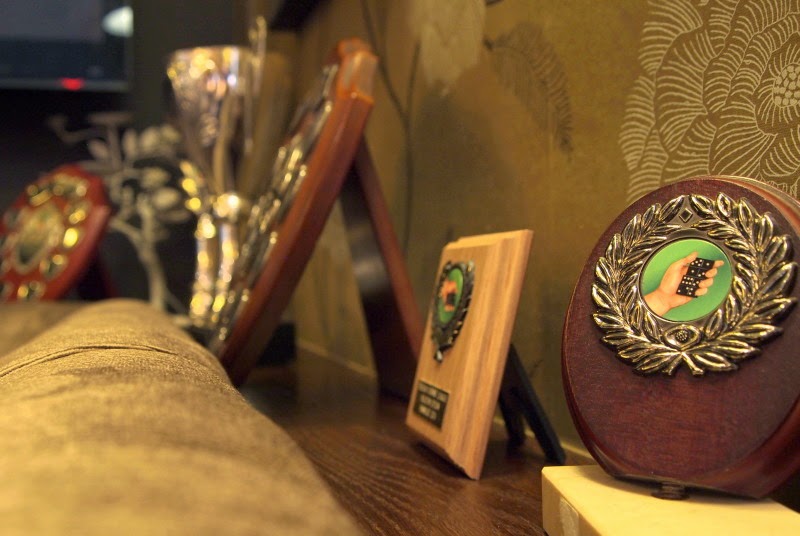Skittles Tables like the one shown above are still relatively common throughout Northamptonshire, slightly less so in surrounding counties. It's in village pubs, clubs, suburban community locals, and occasionally town-centre boozers, that you'll most often find a table, and where there's a skittles table, chances are there will be a team playing in one or more of the many local leagues. So the spread of skittles throughout the county is still very wide, and yet some pub-goers may never have come across a table, much less a game in progress!
Why might this be so? Well, despite the game being relatively common throughout the county, the 'demographic' spread of Table Skittles is more patchy, much less inclusive. It's the more down-to-earth 'locals' pubs and members clubs where the game is popular, pubs where the focus is still very firmly on the social aspect of pub-going. Table Skittles (and pub games in general) are rarely found in the more gentrified rural gastro-pubs, and never in my experience in town-centre circuit bars. You certainly won't find one in a Wetherspoon! (though I'd love to be proved wrong).
Mikado Pheasant, Kettering
The Northamptonshire town of Kettering has a handful of town-centre pubs where the game is still played regularly. But travel out into the sprawl of housing which surrounds the town and practically every pub has a team active in local leagues.
The Mikado Pheasant is one such pub, located a good mile or two out from the town centre on the edge of a large expanse of modern housing. Built in 1980, and originally a far-flung outpost of the Shipstones Brewery empire, the Mikado Pheasant, in common with most estate pubs of this era, is really not much to look at from the outside. In truth it's the kind of pub that most of us rarely come into contact with. Very much a locals pub, which along with the clutch of adjacent shops was built to serve the needs of the immediate locale, and not a largely non-existent passing trade.
The interior of estate pubs like these can often be pretty functional too, but not in the case of the Mikado Pheasant (seen here decked-out for a childrens Halloween party) which has been refurbished to a high standard. Whilst not strictly multi-room, there are a number of distinct areas, including a wide lobby which seems to be popular with locals who like to prop the bar up, almost in the style of northern lobby drinking areas. I also found the pub very welcoming, the locals and licensee keen to chat and extol the virtues of a pub which has had a chequered past, but which now seems to be firmly back at the heart of the community.
Of course the true heart of a pub like the Mikado Pheasant is the games and entertainments, of which the Mikado Pheasant is well served. The Skittles table has been allocated its own seated alcove, all the better for those toiling in the 'woodyard'. The pub teams are usually up-there in the local Burton Latimer League, the 'A' team currently leading division one, and all comers are welcome to throw a few cheeses on Sunday afternoons, a tradition observed in many Northamptonshire pubs.
Melbourne Arms, Duston
 The village of Duston has been largely swallowed up by the growth of near neighbour Northampton, yet still retains much of its essential village character. The Melbourne Arms in particular is still very much a village local, tucked away up a quiet side street of the busy main road through Duston, and well worth seeking out for a pint.
The village of Duston has been largely swallowed up by the growth of near neighbour Northampton, yet still retains much of its essential village character. The Melbourne Arms in particular is still very much a village local, tucked away up a quiet side street of the busy main road through Duston, and well worth seeking out for a pint.The Skittles Table is housed in its own dedicated skittles room in an outhouse at the rear of the pub. Said to have originally been a bottle store, it's likely the building had a more active role at some point in the past given the presence of a now disused fireplace. Skittles seems to have been a relatively recent addition (or reintroduction) to the pub, with the 1990 local CAMRA pub guide stating the 'possibility of Northants Skittles in future'. The skittles team at the Melbourne Arms in Duston ply their trade in the Northampton Wednesday Skittles League.

.jpg)
















.jpg)





